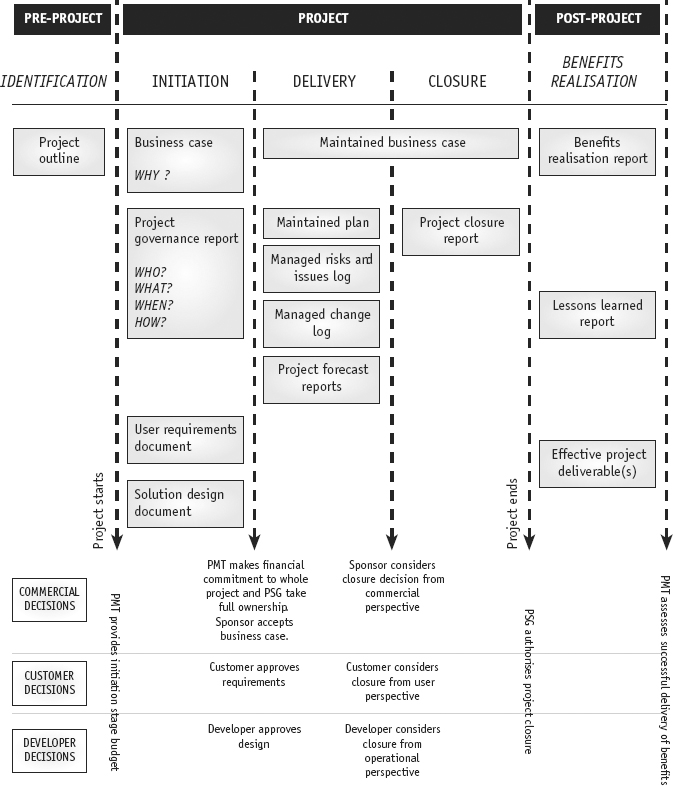Chapter 11
Project closure and beyond
A PROJECT CAN BE CLOSED too quickly as people seek to extricate themselves and identify their next role. They believe remaining involved would be worthless because if the work planned has been completed, what can be gained from any further project stages?
When a project is completed in a well-considered way it provides the chance to learn valuable lessons, to make sure the project delivered everything in the way it was intended and, most importantly, to measure the benefits it promised to deliver.
To do this, it is helpful to separate completion into two stages:
- Project closure – where the project is closed down with the same management rigour as when it was initiated.
- Benefits realisation – where the emerging benefits promised in the business case are monitored, measured and, where possible, controlled to a point where they finally outweigh the whole-life investment.
A project is complete when the closure stage is deemed successful. Benefits realisation is a post-project stage owned and administered by those who commissioned the project, as illustrated by the project life cycle (Figure 11.1).
11.1 The project life cycle

Project closure
This formal stage enables the management environment to be dismantled only when the project has met the project steering group’s success criteria. They keep control of the project until they – and only they ...
Get Guide to Project Management: Getting it right and achieving lasting benefit, 2nd Edition now with the O’Reilly learning platform.
O’Reilly members experience books, live events, courses curated by job role, and more from O’Reilly and nearly 200 top publishers.

